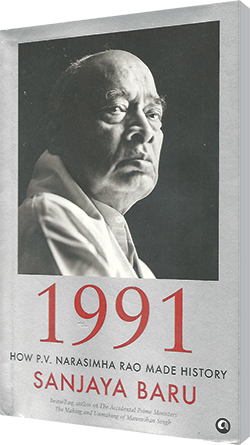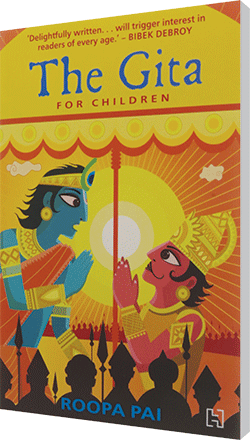 When he died in New Delhi on a winter’s day on December 23, 2004, there were very few mourners for Pamulaparti Venkata Narasimha Rao, former prime minister (1991-96) of India and president of the Congress party which has ruled the world’s most populous democracy for almost half a century since this huge subcontinent of 525 princely states transformed into an independent nation in 1947.
When he died in New Delhi on a winter’s day on December 23, 2004, there were very few mourners for Pamulaparti Venkata Narasimha Rao, former prime minister (1991-96) of India and president of the Congress party which has ruled the world’s most populous democracy for almost half a century since this huge subcontinent of 525 princely states transformed into an independent nation in 1947.
According to the official history of the Congress party in which the Nehru-Gandhi dynasty, founded by free India’s first prime minister Jawaharlal Nehru and perpetuated by his daughter Indira Gandhi and her heirs looms large, PVNR was just another accidental one-term prime minister, undeserving of a place of honour in the history of the Congress and nation.
The critical role Rao had played in the historic liberalisation and deregulation of the Indian economy in 1991, when his minority government took the revolutionary initiative of abolishing industrial licensing and opened up the economy to international trade and investment, was deliberately minimised by the Sonia Gandhi-led Congress party. In this history-cum-biography of PVNR, journalist Sanjaya Baru, former media advisor (2004-08) of prime minister Manmohan Singh and author (Accidental Prime Minister: the Making and Unmaking of Manmohan Singh (2014)), sets the record straight and accords Narasimha Rao his rightful place in Indian history. In particular, he makes it clear that the real architect of the transformational liberalisation of the red-taped and chronically malfunctioning Indian economy wasn’t Manmohan Singh, as Sonia Gandhi and her coterie within the Congress wanted the country to believe. It was PVNR.
Public memory is short, and in retrospect it’s hard to recall what an annus horribilis 1991 was for India. In 1990, Iraq’s dictator Saddam Hussein had invaded and annexed the oil-rich tiny kingdom of Kuwait, sending global crude oil prices spiralling and prompting Standard & Poor to classify India which had run up huge budget deficits of over 8 percent in the 1980s, as a ‘political risk’. Within a few months, a minority coalition government led by former Congressman Chandrashekhar was voted out of power and a general election was called in June 1991.
But on May 21, Rajiv Gandhi, leader of the Congress party which was on the comeback trail following the Bofors scandal, was assassinated in Tamil Nadu by LTTE militants fighting for an independent state within Sri Lanka, which the Congress had opposed. The party’s first reaction was to invite the foreign-born Sonia to lead it into the general election.
When the grief-stricken widow declined, the party elected Narasimha Rao who was all set to retire from politics, as its new leader. According to Baru, under Rao’s leadership the Congress party won more seats in the Lok Sabha (244) — though not a clear majority — than it would have won had Rajiv been alive and leader of the party.
Ardent admirers of Narasimha Rao remember him for initiating the economic reforms of 1991 which launched the Indian economy into a higher growth orbit, doubling the annual rate of GDP growth to 7 percent plus, which has since then lifted an estimated 300 million citizens out of abject poverty. But the value of this biography of the greatest economic reformer in free India’s history, is that it highlights the intense pressures of the difficult geo-political, foreign and domestic political currents which Rao navigated to steadfastly roll back Nehruvian socialism and the licence-permit-quota regime which had ruined the modest aspirations of an entire generation of midnight’s children.
Revealing many sides of Rao’s complex personality, the author states that he was an astute statesman, who managed the collapse of the Soviet Union (1989-90), the destruction of Babri Masjid (1992), and restored democracy within the Congress at the Tirupati conclave (1992) while brilliantly arguing that economic reforms had been initiated by Indira and Rajiv Gandhi.
On the downside, this fully-contextual and well-written biography — perhaps for caste, tribe commonality reasons (the author let’s slip familial and academic links) — borders on hagiography. Even the razing of the Babri Masjid by RSS/VHP militants in broad daylight under government watch, is attributed to Rajiv Gandhi’s original sin of opening the locks of the shrine to allow devout Hindus (who claim that the mosque was built over the birthplace of Lord Ram) in 1985.
Moreover, while this biography traces the history of disenchantment with Nehruvian socialism at great length and cites economic dailies and their earth-shattering editorials, it fails to even mention Business India and Businessworld — pioneer business magazines which revisited India’s ancient entrepreneurial traditions and consistently criticised the country’s money-guzzling public sector enterprises, preparing the ground for the 1991 reforms. Typical of the ipso pleno bubble in which babus and journalists of Lutyens Delhi live.
Dilip Thakore
Fascinating read
 As I began this review, I was reminded of a conversation between Swami Ranganathanda and Gen. J.N. Chaudhuri, former chief of staff (1962-66) of the Indian Army.
As I began this review, I was reminded of a conversation between Swami Ranganathanda and Gen. J.N. Chaudhuri, former chief of staff (1962-66) of the Indian Army.
Swami Ranganathanda informed Gen. Chaudhuri: “The Gita is not meant merely to give you peace of mind, it is meant to give you strength to serve the people, to make you a responsible citizen. It contains a comprehensive philosophy of life, its purpose and goals.”
The Gita is certainly all that, but what’s more important is its contextual backdrop. Consider where the famous dialogue between Arjuna the warrior and Krishna the charioteer, is conducted — on the battlefield of Kurukshetra, just before the war where Arjuna, dejected, has to fight against members of his own family. The Gita is Krishna’s explanation of, among other things, why Arjuna must do what he must, rather than what he wants.
In this famous discourse, Krishna elaborates the nuanced meanings of dharma and duty, on how to equip ourselves for life, manage our simplest and most difficult decisions, things we must do and must not; between what we want and what we accept. On the battlefield Arjuna sees the faces of his teachers, friends and family and realises that he must shed their blood and not that of some faceless, theoretical enemy.
But battles must be fought, and difficult decisions made for order to prevail. In such circumstances, is inaction wisdom or cowardice? Am I doing this because it’s right or because this is what I desire? These are questions the Gita helps answer. It’s not that these questions arise only in middle age; each child faces them when he has to wake to go to school on a cold winter morning, or reprimand a friend who is bullying someone else.
But how do we make this deeply philosophic text intelligible to children?
This delightful book seeks to do just that. It introduces us to the Gita, in simple modern language. The material is presented in chapters with pages coloured white or grey. The white chapters convey the message of the Gita in the form of a conversation between Arjuna and Krishna, in the midst of the Kurukshetra battlefield. The grey pages give a little more background and detail for interested readers, who can read some verses explained in greater depth and a variety of information. Did you know, for example, that we have six distinct seasons?
The Gita for Children unfolds, as it does in the ancient text, through the exposition of karma, jnana and bhakti yogas. The chapters follow the sequence of the original, and are numbered in the same way. The Vishwaroopa, for instance, is revealed in chapter 11, as in the original. But to make it interesting, the author highlights the connection between the Gita’s description of God with the Manhattan atom bomb project. When he witnesses the awesome destructive power of the A-bomb, J. Robert Oppenheimer falls back on a quote from the Gita: “I am become Death, Destroyer of worlds.” The Sanskrit word kaala, denotes both time and death.
One of my favourite chapters is 15, the shortest. This chapter includes the familiar verse where Krishna reveals himself to be the fire of life that consumes all four types of food. But it also reveals the yoga of enlightenment. To help one comprehend the philosophy of the Ashvattha (Banyan Tree) of the Gita, the reader is connected to the Christmas tree, the Pyramids of Egypt and the Empire State Building. These are all examples of the axis mundi, the philosophical centre of the world where all directions come together and connect with the heavens.
Each chapter has this type of conversation between the old texts and modern idioms which makes this book a fascinating read. Give this to your child to read, or better still read it yourself along with your child. You may have much to talk about.
T.C.A. Anant (The Book Review, November 2016)























